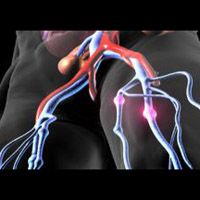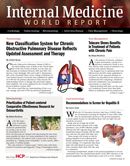In-hospital Pharmacologic Prophylaxis not Linked to Decrease in Venous Thromboembolism Prophylaxis
A study published in the Journal of the American Medical Association found hospitals' administration of pharmacologic venous thromboembolism (VTE) prophylaxis was not associated with lower rates of VTE.

A study published in the Journal of the American Medical Association found hospitals’ administration of pharmacologic venous thromboembolism (VTE) prophylaxis was not associated with lower rates of VTE.
While studies have indicated that pharmacologic VTE prophylaxis drives down hospitals’ pulmonary embolism (PE) and deep vein thrombosis occurrences, investigators from the University of Michigan Medical School claimed most research had only considered surgical and high risk patients in their analyses and not the general population.
For their retrospective and multicenter cohort study, researchers included 31,260 patients enrolled at 35 Michigan hospitals from Jan. 1, 2011 to Sept. 13, 2012. Patients were enrolled in the study if they were admitted to the hospital for a minimum of 2 days.
Among the eliminated participants were individuals who under 18 years old, pregnant, underwent surgery during their admission, were in intensive care, utilized palliative care, experienced a VTE 6 months prior to the study’s enrollment, admitted for a presumed VTE, were kept simply for observation, and reentered the hospital within 90 days of discharge.
Among the included patients, researchers examined data for outcomes involving hospital-associated VTE, which included upper- or lower- extremity DVT and PE. To be considered a hospital-associated VTE, the incident had to of occurred on the third day or later of the patient’s hospitalization.
With 20,794 patients officially included for their analysis, the investigators reported 14,563 individuals (70.0%) were given pharmacologic prophylaxis. Specifically, high-, medium-, and low-performance hospitals provided prophylaxis 85.8%, 72.6%, and 55.5% of the time, respectively.
Based on their definition of a hospital-associated VTE, the researchers determined 226 VTEs occurred, with 88 (38.9%) and 138 (61.1%) of those incidents being PEs and DVTs, respectively. Of the 226 VTEs, 34 (15.0%) occurred while the patients were hospitalized. Through telephone interviews, the researchers identified 31 (16.1%) patients who experienced a VTE post-discharge. Moreover, the writers noted 166 (73.5%) of the 226 highlighted VTE patients were given a pharmacologic prophylaxis when admitted.
“Relative to high-performance hospitals, hazards of VTE at 90 days were not significantly different in the moderate-performance (HR, 1.10; 95% CI, 0.74-1.62) or low-performance (HR, 0.96; 95%CI, 0.63-1.45) hospitals, suggesting that hospital performance was not associated with risk of subsequent VTE,” the authors wrote.
From their data, the researchers claimed overall VTE instances are low. Furthermore, they determined patients admitted to hospitals which used pharmacological prophylaxis at lower rates did not have a higher risk of experiencing a VTE.
“Collectively, our findings imply that efforts to broadly increase rates of pharmacologic prophylaxis in non-critically ill general medical patients may not yield significant reductions in hospital-associated DVT or PE,” the investigators found.
Based on their findings, the researchers don’t recommend hospitals taking measures that would increase a hospital's overall VTE use, as it would lead to non-at risk patients being overmedicated. However, they pressed for initiatives capturing and identifying individuals at risk of having a VTE and providing them with appropriate treatment.
